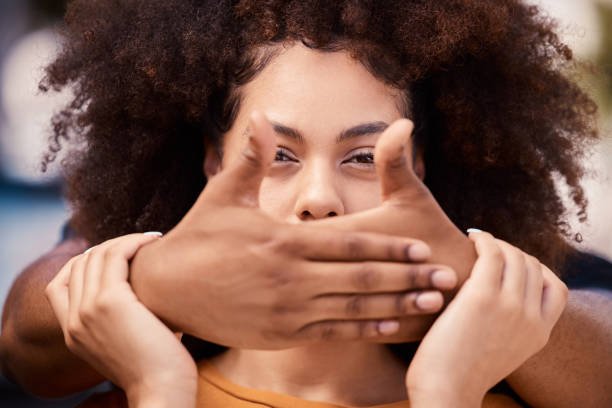Gender-based violence (GBV) is a pervasive and destructive form of violence that affects millions of people around the world. Although women are disproportionately affected by GBV, it is important to recognize that both men and women can become victims of gender-based violence.
What is gender-based violence?
Gender-based violence (GBV) refers to any form of violence or abuse that is directed at an individual based on their gender. This includes physical, sexual, emotional, and psychological violence, as well as harassment and discrimination. GBV can occur in a range of settings, including homes, schools, workplaces, and public spaces, and can have serious and long-lasting impacts on the physical and mental health of victims.
GBV is often rooted in unequal power dynamics between men and women, and can be perpetuated by cultural and societal norms that support gender inequality. Women are disproportionately affected by GBV, with one in three women worldwide experiencing physical or sexual violence in their lifetime. However, it is important to recognize that men and people of all gender identities can also be victims of GBV.
Examples of GBV include domestic violence, sexual assault and harassment, forced marriage, female genital mutilation, honor killings, and trafficking. These forms of violence can have a range of physical and emotional effects on victims, including injuries, trauma, and mental health problems.
GBV is a serious violation of human rights and is recognized as a global public health issue. It is essential to work towards preventing and addressing GBV through education, awareness-raising, and policy changes. This includes promoting gender equality, challenging harmful gender stereotypes, providing support and resources for victims, and holding perpetrators accountable for their actions.
Reasons Why both Men and Women could become Victims of Gender-based Violence
Here are some reasons why both men and women could become victims of GBV:
- Intersectionality: GBV is not just about gender; it is also influenced by other factors such as race, ethnicity, sexual orientation, and socioeconomic status. Individuals who belong to marginalized groups may be at higher risk of GBV, regardless of their gender.
- Power dynamics: GBV is often rooted in power imbalances, with the perpetrator exerting control over the victim. Men who are victims of GBV may experience this dynamic in relationships where their partner holds more power, such as relationships with older or more financially stable women.
- Stigma and shame: GBV is often stigmatized, and victims may feel ashamed or afraid to come forward. Men who are victims of GBV may face additional stigma due to societal expectations around masculinity and strength, which can make it difficult for them to seek help.
- Cultural norms: GBV is often perpetuated by cultural norms and expectations around gender roles and relationships. In some cultures, men may be expected to be dominant and aggressive, while women are expected to be submissive. These norms can contribute to GBV against both men and women.
- Substance abuse: Substance abuse can increase the risk of GBV for both men and women. Individuals who use drugs or alcohol may be more likely to engage in violent behavior or become victims of violence.
Video: Inspiration: What is Gender-Based Violence?
It is important to recognize that both men and women can become victims of GBV and to take steps to prevent and address this issue. This includes promoting healthy relationships, challenging gender stereotypes, and providing support and resources for victims of GBV. It is essential to create a culture where victims feel safe and supported in seeking help, regardless of their gender.
Also Read:
- 12 Reasons why incidents of Gender-based Violence in Communities Continue
- Why South Africans need to help those Affected by Gender-based Violence
- How gender inequality in relationships could contribute to sexual abuse
- How gender inequality in relationships could contribute to teenage pregnancy
- Breaking the Cycle: How Society can Contribute to the Ongoing Displays of Gender Stereotypes in SA Communities
- The Causes of gender-based Violence During Lockdown
- The Negative Impact of Gender Differences in Sports Participation
- Strategies that Girls could Implement to Challenge Gender Stereotypes within the school
- 20 Examples of Traditional Gender Roles
- Why Both Men and Women could become Victims of Gender-based Violence
- What can Victims of Gender-based Violence do to Ensure Safety
- Reasons why Discrimination Against Gender is Illegal in the South African Constitution
- How Can NGOs Take Concrete Steps to Eradicate Gender-Based Violence?
- At what Age do Children Make Gender-Stereotyped Game and Toy Choices?
- Reasons Why Survivors of Gender-based Violence may Feel Hesitant to Report Human Rights Violation
- Strategies that Responsible Citizens may use to Help Victims of Gender-based Violence
- Feminist Legal Theory: is it Wrong to Treat Men and Women Differently on the Basis of Gender
- 10 Causes of Gender-Based Violence in South Africa with Examples
- A Critical Discussion on Gender-Based Violence as a Human Rights Violation in South Africa: Acts and Examples
- The Devastating Effects of Gender-Based Violence in South Africa: Real-Life Examples and the Way Forward

